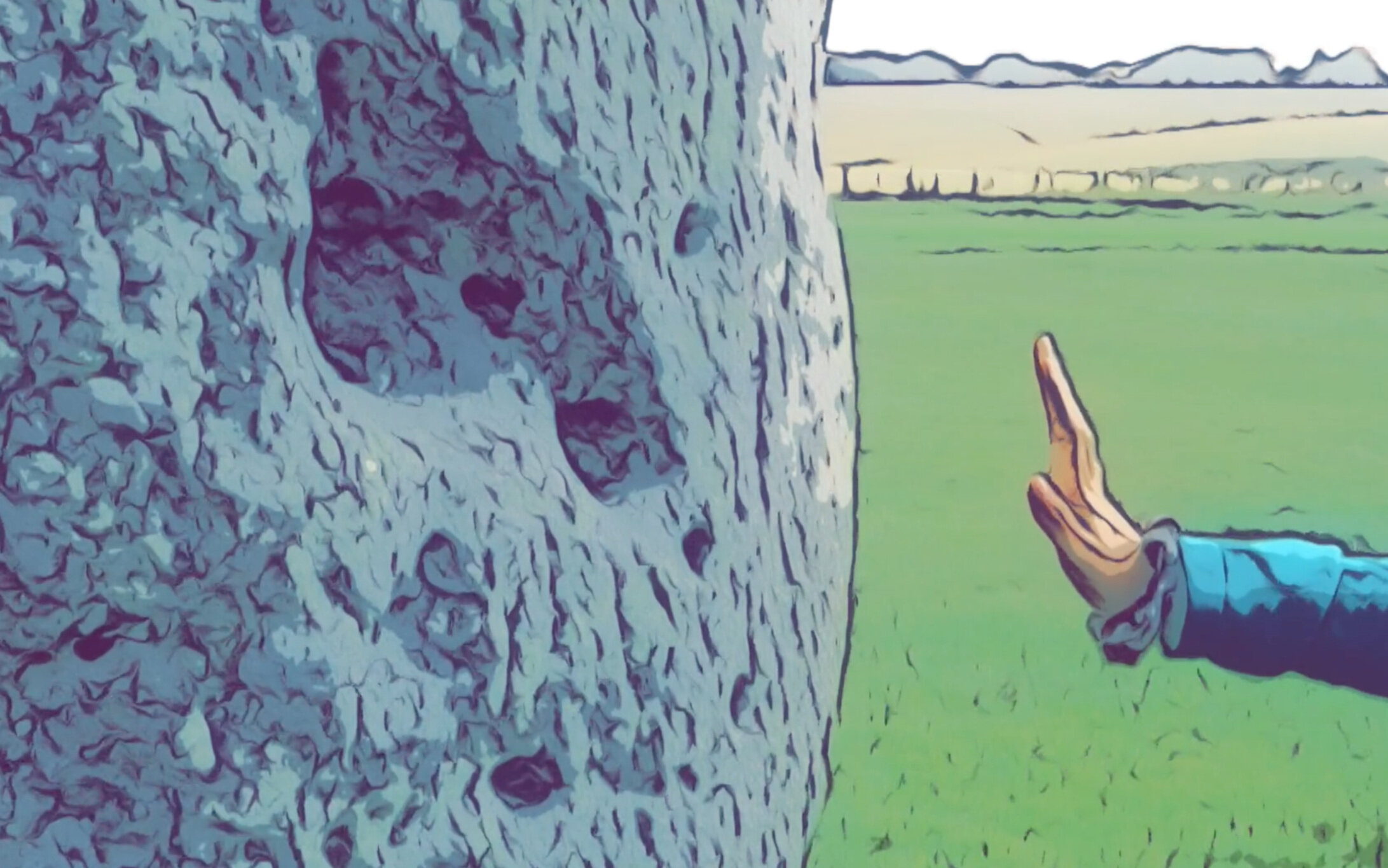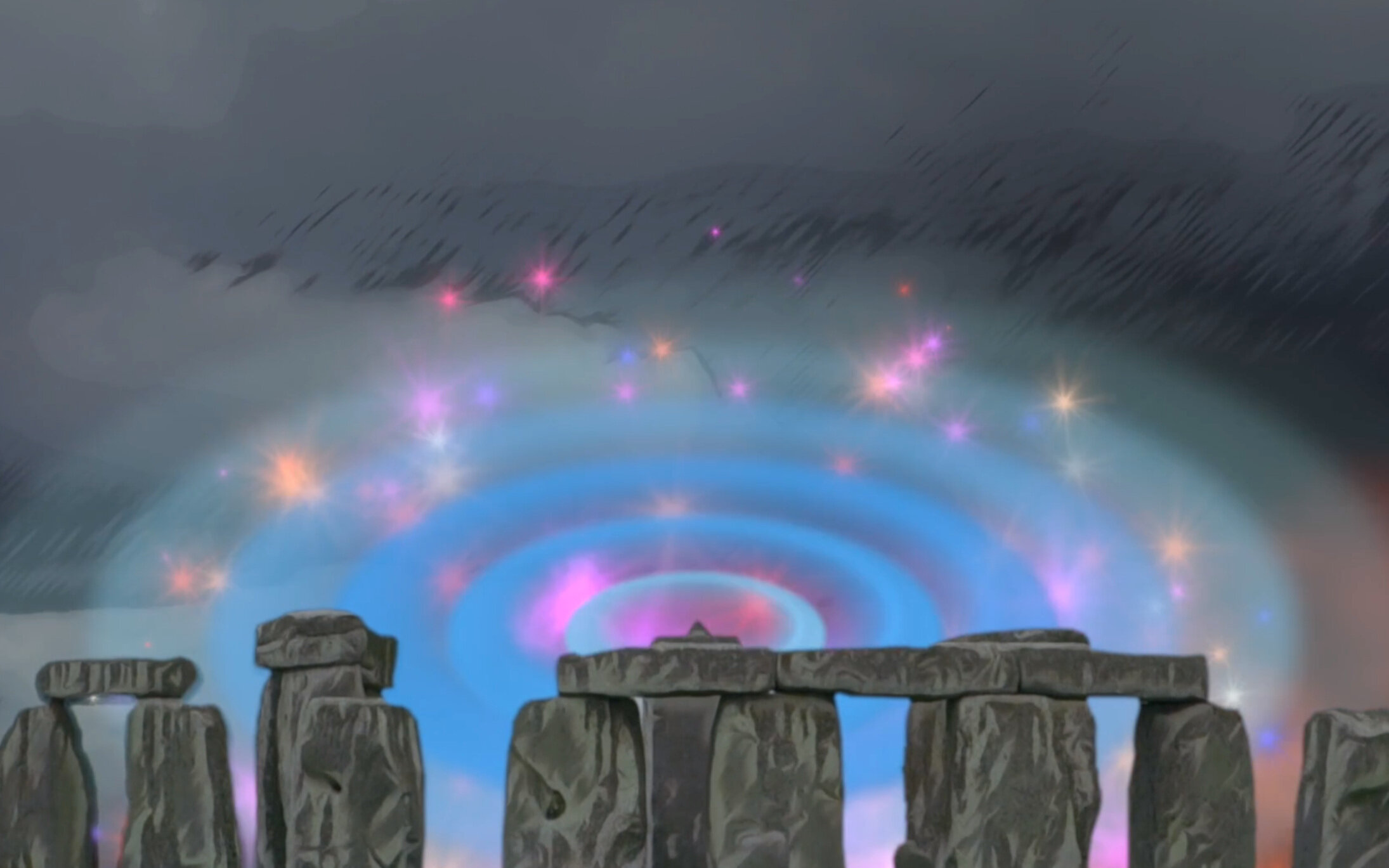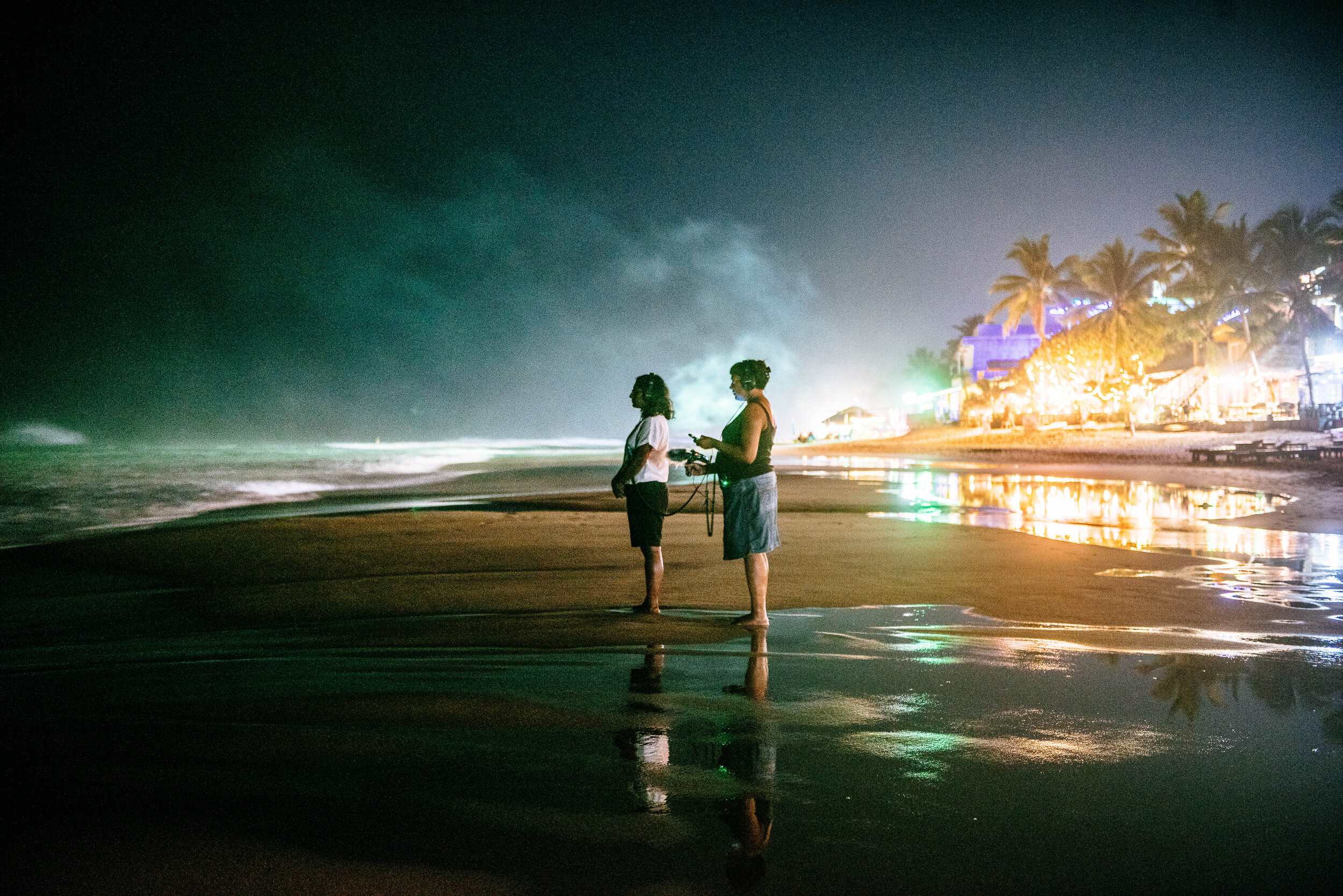STONEHENGE 3019: a project Q&A
Artists: Sleepdogs
Partners: English Heritage and the Army Welfare Service
Client: Bloor Homes
In 2019, Ginkgo Projects worked with Bristol-based artists Sleepdogs on a joint project with English Heritage and the Army Welfare Service (AWS) as part of the Heritage Lottery-funded Shout Out Loud initiative. Shout Out Loud gives young people a voice in retelling stories and representing ideas of the past: in this case, Stonehenge. This was part of the Kings Gate Public Art programme being delivered by Ginkgo on behalf of Bloor Homes.
Ginkgo engaged artists Sleepdogs and opened up the brief to be reshaped by Sleepdogs to suit their varied practice which includes theatre, film, digital audio and more.
Through Shout Out Loud, Sleepdogs worked with young people from a military background, some of whom were moving from MOD accommodation to Amesbury, and many of whom had never been to Stonehenge before. The result of the collaboration – STONEHENGE 3019 – is a 15 minute film that constructs a future vision of the stones that looks back in time to its various pasts – real and constructed.
We spoke with Sleepdogs’ Tanuja Amarasuriya and Timothy X Atack to find out more about the commission and how they brought a 3,000 year history of one of the world’s most mysterious monuments to life.
What attracted you about this commission?
We're both drawn to projects with big, unwieldy questions at their heart – so the idea of 'responding' to Stonehenge along with a group of young people was immediately electric. There's so much we don't know about the site, so in some ways there's so much that's allowed when you're dreaming up stories. Basically, it sounded like the best playground – for the young folks, and for us too.
What’s your usual approach to a commission or brief?
It's most important to respond and collaborate. We want to understand what our commissioners want to achieve, but then our role is to think as imaginatively as possible about how we can get there, and a lot of that is about getting the commissioners to trust us and believe in something that doesn't exist yet!
It's all about finding shared points of excitement and avenues for curiosity. We gather material of all different kinds but neither of us head in with too many defined ideas. Coming from a theatre and performance background, we're both very keen to make work that feels as alive as possible, and often that's about being alive to accidents, clashes, mistakes, chance and circumstance. It's not that we don't plan (we always do a load of prep and research!) but we know that when we walk into the room to start work, it's vital not to shut down anything magical that might happen.
How did you work with Ginkgo on this project?
We talked a lot about the history of the work Ginkgo had been part of producing so far in the area, and Sophie gave us a fantastic summary of the different organisations and artists working around Amesbury. It's always great to be part of a wider story. And we talked a lot about keeping that sense of creativity afloat; we didn't know how many people would turn up, we didn't know what the weather would make it all feel like... Ginkgo really trusted us as artists and gave us so much support in keeping things fluid and approachable, as did English Heritage and the Army Welfare Service.
How did you work with the young people? What was the process?
The first thing was to find out about them and their journeys. A lot of the group had travelled as their parents moved around the world – this resonates with us: we both grew up halfway across the globe from the places we were born.
Then we jumped headfirst into the information available on Stonehenge and its surroundings, and the many theories about its function and history, from the historically realistic to the ridiculous. We were worried to begin with that it might be too much to handle, but as always adults tend to forget that young folk can have a processing capacity for ideas that'll put most of their elders to shame.
Within a day we had a ridiculously detailed timeline over several thousands of years, fracturing into multiple pasts and multiple futures, illustrated in various places, recycled or upscaled in others... it was wild. Then in subsequent days we set about supporting those ideas with sound and music, film, graphics, model-making, storytelling. We were a very productive little laboratory, I think. We called ourselves a 'crew'.
After a site visit to the centre of the stone circle, where we captured lots of video and sound, Sleepdogs took away all of this treasure and fashioned a story from it which became the final film, STONEHENGE 3019. I reckon a good 70% of the filming, and 60% of the musical material, was captured or originated by our crew. And the story is populated by images and ideas that the young people came up with during the workshops, too.
What were the key considerations you had to keep in mind?
All our participants had very different creative personalities and it's sometimes difficult to keep things as open as you'd like: ideally, we'd have ten times the equipment, allowing everyone to investigate and play freely! But we had to build a structure that allowed everyone to rotate around different areas -- teams working on sound and music, film, etc.
At one point we divided the room, blacked out half of it, and had one team filming in a sort of animation studio while outside, another team built scale models of what had been christened 'Bonehenge'. You have to allow for flights of fancy while bringing it back, all the time, to the act of working together, solving problems as a group. It's a juggling act!
What were your aims for the project and did they differ from the outcome?
I think we'd have been happy if any one of our crew felt that something new, interesting and/or exciting had happened that week. The evidence suggests we managed a little bit more than that: it was a friendly atmosphere that, by the looks of things, took some of the crew on unexpected journeys. By the end, some people were expressing a desire to make their own film or tell more stories.
The support from Army Welfare Service's Lucy Hunt and English Heritage's Jemima Wilson was fantastic, and it meant we were able to focus a bit more than expected on certain ideas and hunches from the crew.
We didn't know what we were going to make, but by the midpoint of the sessions it seemed obvious we were heading for a film of some sort. That was the one format in which we could run with all the amazing ideas that were bubbling up. There were so many unknowns going into the workshop week – we didn't even know how many people would turn up – and suddenly there was so much energy and creativity in the room.
It was exciting for us to have so many ideas to respond to and we're really happy that we were able to include so much of the material that the crew generated in the final film. It was really thrilling to screen the finished film at the Stonehenge centre, with all the young people, and feel like it was such a genuinely collaborative effort.
Tell us about some of the recent projects you’ve been working on
Well, we've been developing a musical for a few years now -- an electronic musical inspired by Björk and the Pet Shop Boys and ANOHNI. It's about love and grief, it's called A MILLION TINY GLITCHES. We're recording the album right now.
In 2018, we were out in Sri Lanka, working on site-specific performances with a cohort of UK artists at Sura Medura, a residency on the west coast of the island. We began making an augmented audio headphones piece called OCEAN CONFESSIONS for coastal spaces, where the audience stand with their feet in the water, at night, looking out at the ocean, listening to modern myths of the sea, scored with lush orchestral music. We're hoping we can develop it further for other shorelines.
Tanuja recently directed a run of Danusia Samal's prize winning play, OUT OF SORTS, at Theatre 503 in London. And Tim's been working on scripts for various original TV ideas, in development here in the UK and the US.
What are you working on next?
As well as the musical, the next Sleepdogs project is called BABEL'S CUPID. It's an epic love story in the shadow of a deep-space radio telescope. We're always working up lots of ideas. We've got a development process called The Thirty which means we're never short of things that could spring to life at a moment's notice.
We're also about to start work on an audio commission in collaboration with fellow sound artist, Duncan Speakman, for We The Curious in Bristol, which will open as part of a new exhibition later this year.




